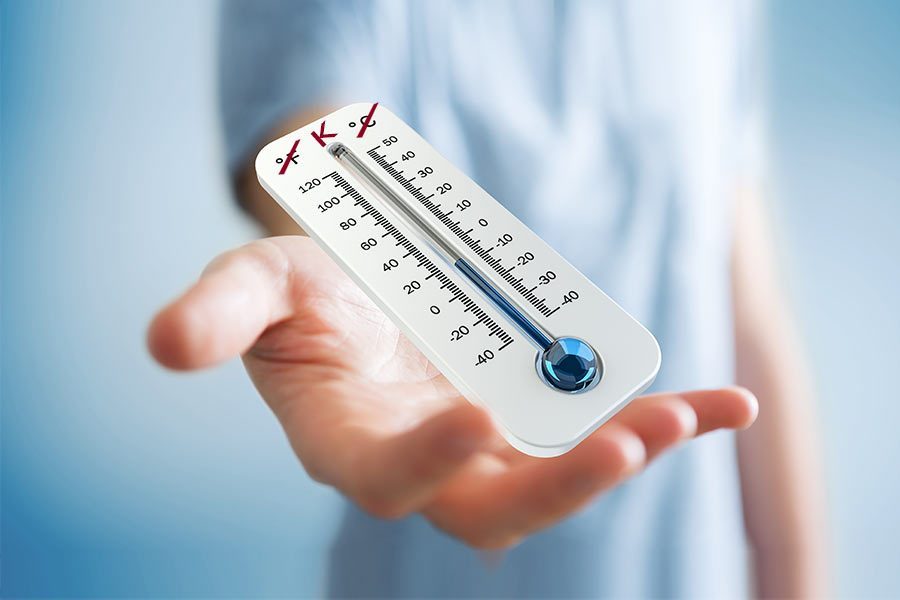Hydrogen A to Z Series: K For Kelvin
By: GenH2 Staff
Read Time: 3 minutes
Defining the Hydrogen Economy from A to Z: K is for Kelvin
Last week’s blog on Joule discussed “heat” and this week we focus on the temperature unit Kelvin (K). When discussing temperature, one of the most important/universal measurement in life, most of us are familiar with the Centigrade or the Fahrenheit scale, but to those who are in the Cryogenics worlds of Liquid Hydrogen (LH2), Liquid Nitrogen and/or Liquid Helium, the Kelvin (K) is the temperature scale of choice and the unit of thermodynamic temperature.
Lord Kelvin (Williams Thomson) met Joule in 1847 and with him, along with other researchers advanced the concepts of heat, work, temperature and the physical laws relating to them were not previously well understood. Researchers such as Thomson and Joule, along with others developed what we now know as the field of thermodynamics and created versions of the first and second laws of thermodynamics. In 1848, Lord Kelvin defined an absolute temperature scale based on the Carnot cycle (from the French physicist Carnot in 1824 – expanded by others in the 1830s and 1840s) which was later named after him as Kelvin’s absolute temperature scale. Working together with Joule, he also showed experimentally that air will cool when expanded from high to low pressure through a valve – the Joule-Thomson effect and remains today a major cooling technique used in cryogenics.
Kelvin’s “absolute” zero is sometimes called “infinite cold.” The other thing to be noted, is that the K unit is not expressed in degrees like Celsius or Fahrenheit are and used by itself to describe temperature, however for a frame of reference: 0 K = -273.15 degrees C = -459.67 degrees F; room temperature is about 70 degrees F, 21 degrees C or 294 K. Over the decades we have continuously improved on the systems, technologies, methods and units used to quantify, measure and express absolute zero. In 1954, the Kelvin was defined as equal to the fraction 1⁄273.16 of the thermodynamic temperature of the triple point of water—the point at which water, ice and water vapor co-exist in equilibrium. That is a valuable common reference because, for a precise formulation of water at a specific pressure, the triple point always occurs at exactly the same temperature: 273.16 K. The Kelvin has been redefined in terms of the Boltzmann constant, which relates the amount of thermodynamic energy in a substance to its temperature. When the revised International System of Units (SI) was approved in November 2018, the new definition became: the kelvin, symbol K, is the SI unit of thermodynamic temperature; its magnitude is set by fixing the numerical value of the Boltzmann constant to be equal to exactly 1.380649 × 10-23. J K-1[joules per kelvin.
Key takeaways are: (1) The Kelvin temperature scale is an absolute temperature using the third law of thermodynamics. (2) Temperatures recorded in Kelvin do not have degrees like centigrade and Fahrenheit scales. (3) The zero point of the Kelvin scale is absolute zero (or absolute cold), which is when particles have minimum kinetic energy and cannot get colder. (4) Each unit (a degree, in other scales) is 1 part in 273.16 parts of the difference between absolute zero and the triple point of water. This is the same size unit as the Celsius degree.
For GenH2, the 20.28 K value stands out as important, the temperature of Liquid Hydrogen as we focus on liquefaction, controlled storage, and transfer of LH2 for meeting infrastructure needs for a clean energy future in land, sea, air, and space applications. Look for our next week’s blog on M, Marine Mobility.
Blog written by GenH2 team member: Martha Williams, Ph.D.



